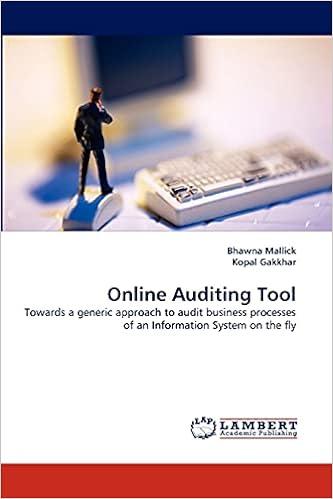Question
1. An entity issues shares as consideration for the purchase of inventory. The shares were issued on January 1, 2009. The inventory is eventually sold
1. An entity issues shares as consideration for the purchase of inventory. The shares were issued on January 1, 2009. The inventory is eventually sold on December 31, 2010. The value of the inventory on January 1, 2009, was $3 million. This value was unchanged up to the date of sale. The sale proceeds were $5 million. The shares issued have a market value of $3.2 million. Which of the following statements correctly describes the accounting treatment of this share-based payment transaction?
a. Equity is increased by $3 million, inventory is increased by $3 million; the inventory value is expensed on sale on December 31, 2010.
b. Equity is increased by $3.2 million, inventory is increased by $3.2 million
c. Equity is increased by $3 million, inventory is increased by $3 million; the inventory value is expensed over the two years to December 31, 2010.
d. Equity is increased by $3.2 million, inventory is increased by $3.2 million; the inventory value is expensed over the two years to December 31, 2010.
2. For the year ended May 31, 2009, Orchard, Inc. had per share earnings of $4.80. Orchard's outstanding shares for the 2008-2009 fiscal year consisted of $2,000,000 of 10% preference shares with $100 par value and 1,000,000 ordinary shares. On June 1, 2009, the ordinary shares were split 3 for 1, and the company redeemed one-half of the preference shares at par value. Orchard's profit for the year ended May 31, 2010, was 10% higher than in 2009. The earnings per share for the fiscal year ended May 31, 2010 is a. $1.73 c. $1.80 b. $1.77 d. $2.70
3. On January 1, 2010, Parco Corporation issued 3-year 6,800 8% convertible bonds at par for $1,000 per bond. Interest is payable annually in arrears. Each bond can be converted any time before maturity into 250 ordinary shares. On maturity, Parco has the option to settle the principal amount of the bonds in cash or in ordinary shares. Market interest rate prevailing at the time of the bond issue without a conversion option was 10; similarly, the market price of one ordinary share at that date was $3. Other details are as follows: Profit for the year 2010 $3,400,000 Ordinary shares outstanding, $1 par 4,080,000 Convertible bonds outstanding 6,800,000
Ignoring income tax, the diluted earnings per share for the year ended December 31, 2010 is (Round-off present value factors to four decimal places) a. $0.70 c. $0.68 b. $0.65 d. $0.83
Step by Step Solution
There are 3 Steps involved in it
Step: 1

Get Instant Access to Expert-Tailored Solutions
See step-by-step solutions with expert insights and AI powered tools for academic success
Step: 2

Step: 3

Ace Your Homework with AI
Get the answers you need in no time with our AI-driven, step-by-step assistance
Get Started


